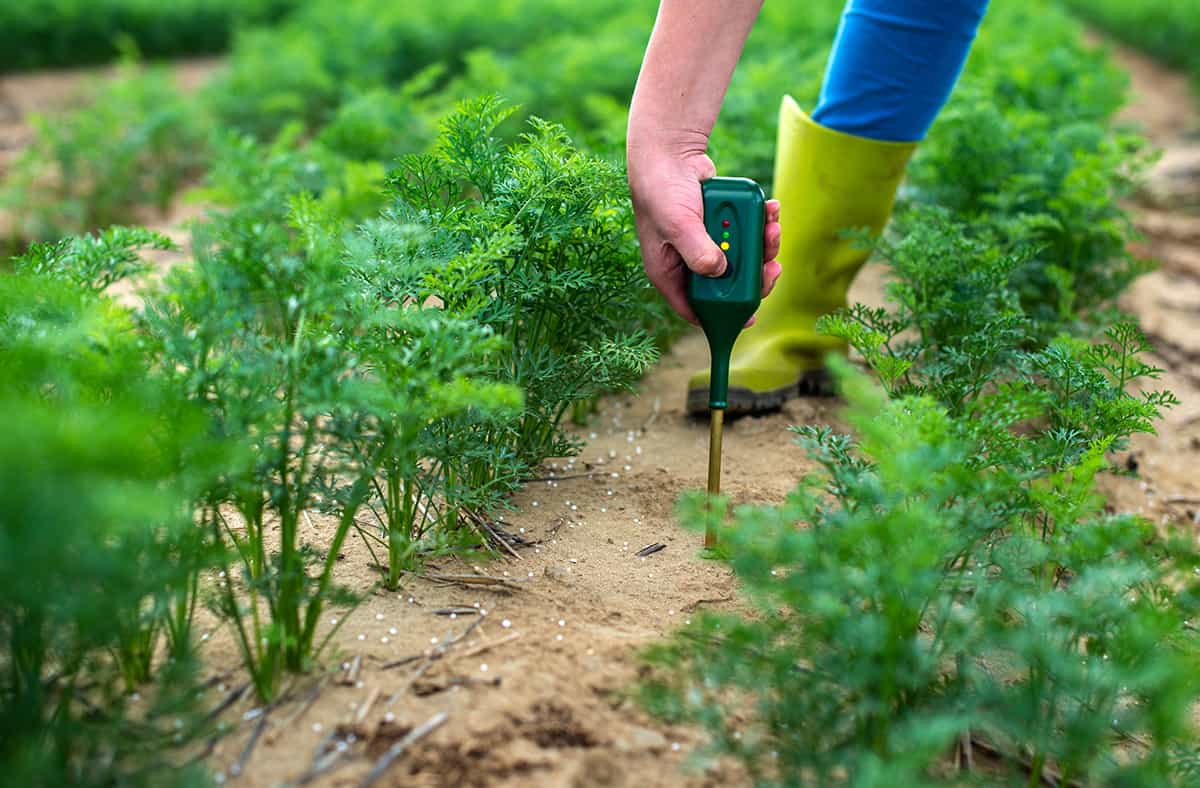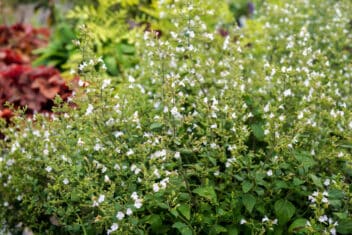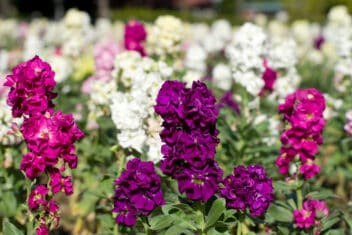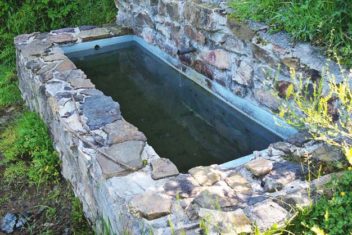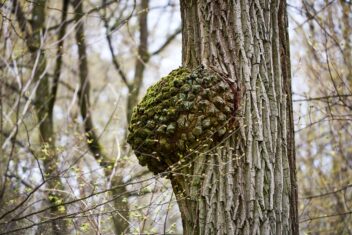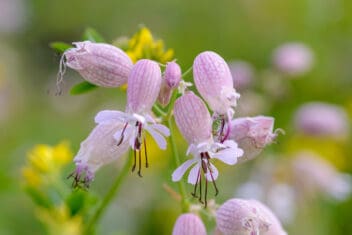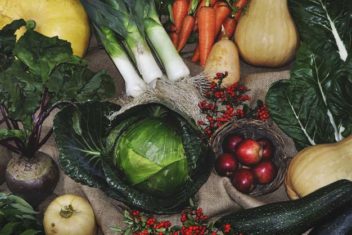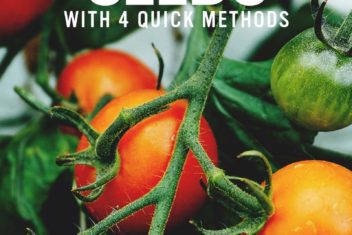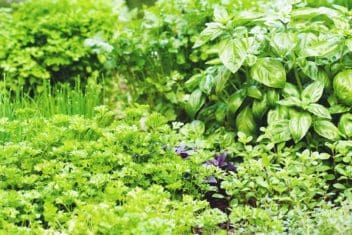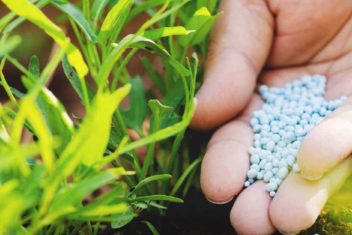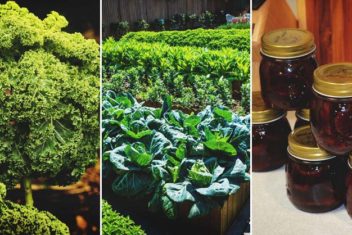All soil has a pH range between acidic and alkaline, with neutral being in the middle. Most people worry about acidic soil, but gardeners need to understand alkaline soil as well.
Having alkaline soil isn’t necessarily a bad thing if you grow plants that prefer this pH range. But if your plants aren’t thriving, you might want to address your alkaline soil.
Here’s how.
What is Alkaline Soil?
The pH scale runs from 0 to 14. Most soil sits somewhere from 3-10. Acidic soil is anything lower than 7.
Alkaline soil is often called “sweet soil” by experienced gardeners. When reading a soil test, any score above 7 is alkaline, meaning it has higher sodium, calcium, and magnesium levels.
Understanding soil pH is an important part of the gardening puzzle. pH affects the amount of available nutrients in the soil that roots can absorb.
When soil is highly alkaline or highly acidic, it reduces the nutrients available to plants.
Alkaline soil is less soluble than acidic or neutral soil. Unless the plants in your garden thrive in alkaline soil, they might have stunted growth and nutrient deficiencies.
That’s why it’s best to keep the alkaline level no higher than 7.5 to 8 for most plants.
Having slightly alkaline soil that is around 7.5 is no big deal, but having soil that tests higher than 8.0 might cause problems for your growing plants.
With the right tricks, fixing alkaline soil is no big deal; it simply requires time and patience.
What Causes Alkaline Soil
Alkaline soil is less common than acidic or neutral soil. It’s more common in arid or desert areas where rainfall lacks, or in dense forests.
Watering soil with hard water also increases the chances of alkaline soil because hard water contains lime. Pure water has a pH range of 7, but most water sources take on bits of the surrounding environment, so the pH varies by region.
Water that absorbs minerals is more likely to be alkaline. Common alkaline water is found in natural springs or mountain runoff. It’s also found in water that goes over limestone.
Another reason why water might be alkaline is due to surrounding farming practices. Those who live in a rural area with farms nearby might notice this because many commercial farmers use lime to amend their soil. As that runs off into the water, it raises the pH.
In some areas, alkaline soil is due to the limestone materials added when home builders remove topsoil during construction. Topsoil is most often replaced with alkaline subsoil and building materials, like limestone gravel and concrete.
Irrigating with high pH water increases alkalinity as well.
In some areas, alkaline soil is the norm, and it might end up becoming a never-ending battle to fix it. Many gardeners in alkaline areas use container gardening for plants that need acidic soil.
Plants That Grow in Alkaline Soil
Fixing alkaline soil isn’t always necessary. Many plants tolerate sweet soil, and some downright thrive in this environment.
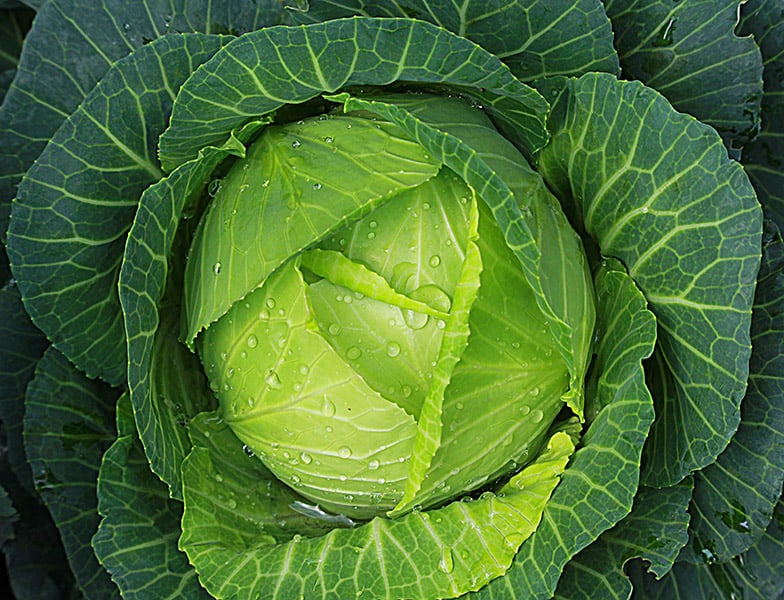
If you cannot or don’t want to amend the soil, here are some plants that grow well in alkaline soil:
- Asparagus
- Okra
- Beets
- Cabbage
- Cucumber
- Celery
- Oregano
- Cauliflower
- Parsley
- Echinacea
- Lavender
- Zinnias
- Sweet Pea
- Phlox
How to Fix Alkaline Soil
Not all plants grow well in alkaline soil, so you’ll need to amend the soil to increase the acidity level. Before you go messing with your soil’s pH, make sure to do a soil test!
No matter what method you select, allow the material to settle for several weeks before retesting.
Here are some of the best ways to fix alkaline soil.
1. Add Sulfur
One of the best (and easiest) ways to increase acidity (and lower pH) in the soil is to add sulfur. Most garden nurseries sell garden sulfur in the area with compost or fertilizers.
Add one to three ounces of ground rock sulfur per one square yard of soil. Doing this lowers the pH level to appropriate levels. Before adding it, mix the sulfur well with compost.
You’ll need to use more sulfur in clay soil and less in sandy soil.
When you buy sulfur for your garden, you’ll have three options: common sulfur, ferrous sulfate, and aluminum sulfate. Here’s how to decide which one to buy.
- Common sulfur is the least expensive option but takes a while to work.
- Ferrous sulfate adds iron to the soil and helps plants that have yellowing leaves and overall poor health.
- Aluminum sulfate is a mixture of sulfur and ammonium. It reacts more quickly than other types, but you must apply a larger amount for the results desired.
Understand that adding sulfur can damage your garden soil. Always use sulfur and compost together and test your soil so you know how much to add before you get started.
2. Amend with Peat Moss
Another option is to add peat moss to your soil. Peat moss is often included in raised garden bed soil mixtures to help increase drainage, but it also makes your soil more acidic.
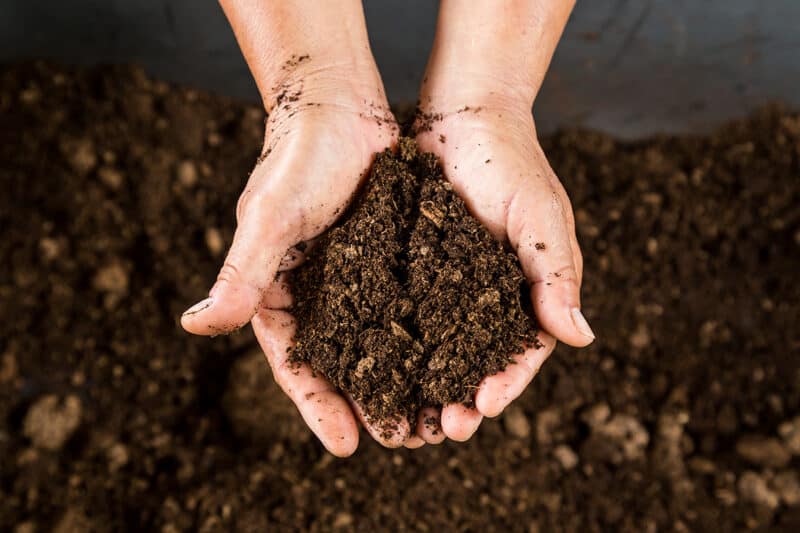
Canadian peat moss has a pH range of 3.0 to 4.5, making it a great organic material to fix alkaline soil. For small garden beds, laying a one to two-inch layer of peat moss works well. Make sure to work it well into the top 8-12 inches of soil before planting.
Be aware that peat moss is a limited resource and harvesting it has a negative impact on the environment, so it’s best used in small areas.
3. Try Composted Wood Chips or Sawdust
Composted wood chips or sawdust are another option to lower the pH in your soil. Not only are these organic, cheap materials, but they also increase the absorption ability of the earth. It will help to increase moisture retention if the soil is sandy.
Composted pine needles are an option as well, but it’s best to test with a small area first. Some suggest that this blocks some plants’ growth, but acid-loving plants, such as blueberries, love pine needles as mulch.
4. Keep At It
It’s crucial to understand that amending soil isn’t a one time deal. It takes multiple applications, and it must be done each year, or the soil reverts back to its alkaline-self.
Until the amendments take effect, you have to help your plants. The roots absorb most nutrients, but the leaves absorb a small amount.
Spraying your plants with foliar supplements, such as seaweed extract or fish emulsion, helps supply extra nutrients and trace elements otherwise unavailable in the soil.
Understand that these supplements are quick and short-lasting compared to slow-release fertilizers that you spread in the soil. It’s best to apply small amounts frequently every two weeks.
5. Always Add Compost
Compost won’t raise or lower the pH range, but it acts as a buffer so the soil can operate as if it was more acidic even if it’s not. Over time, compost is a conditioner that reduces alkaline soil’s effects on the plants while improving enzyme activity and nutrient levels.
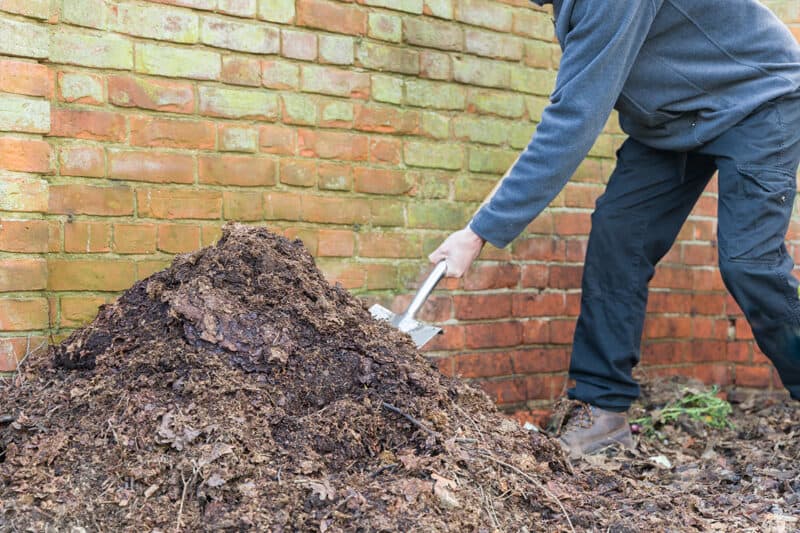
The problem is that you need to use a lot of compost, especially if you have lower pH ranges over 8.
Adding large amounts of organic matter lowers the availability of nitrogen, so understand your plants might show signs of nitrogen deficiency if you add all of the compost at one time rather than over an extended period.
What Not to Apply to Alkaline Soil
The last thing you want to do is use a material in your garden that might add nutrients but lower your soil’s pH range. Here are some things not to put in your alkaline soil:
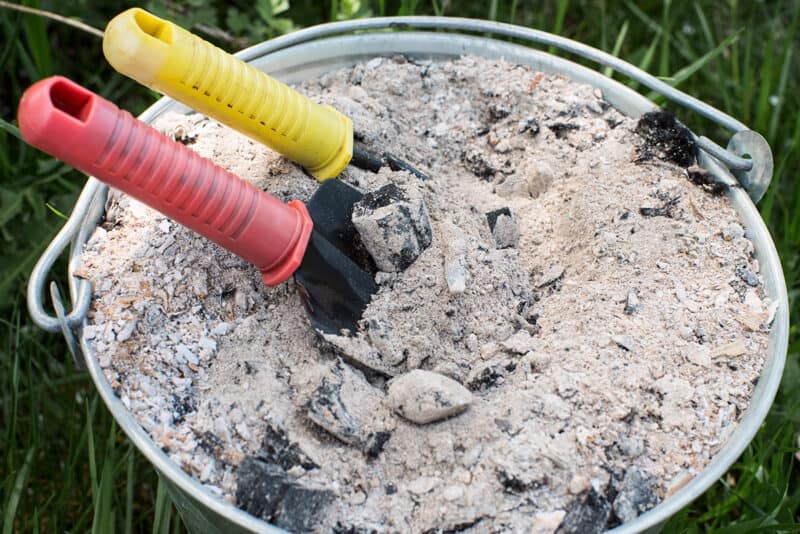
- Mushroom compost
- Wood ash
- Chicken manure
- Dolomite
- Agricultural lime
These products are valuable and have their place in acidic soils but not if the soil is already alkaline. Save these for other times.
